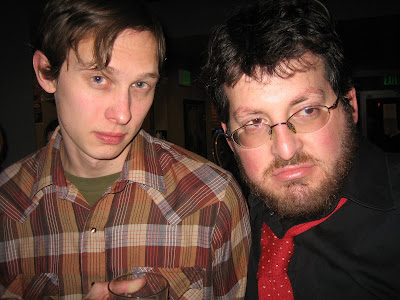ONE*
Julie Blackmon - Domestic Vacations
January 22, 2009 - March 7, 2009
Fahey / Klein Gallery
"Her photographs blend autobiography and fiction to create surreal yet plausible scenarios that reflect contemporary everyday family life with acumen, humor, and insight."
"'As an artist and as a mother, I believe life’s most poignant moments come from the ability to fuse fantasy and reality: to see the mythic amidst the chaos.'"
*Many of the images in
Blackmon's
Domestic Vacations exhibition show signs of extreme alteration in Photoshop, but I kind of like them anyway. Even though the scenes couldn't have possibly existed in reality, I still try to work out the scenarios in my mind. Photography, as a rule, is believable.
TWO**
United in Nima: Bay Area and Ghanaian Youth Share Lives Through the Lens January 8, 2009 - March 25, 2009
SF Camerawork
"...a new exhibition featuring photographs by low-income youth from SF Camerawork’s
First Exposures photography mentoring program and teens living in the notoriously poor Nima slum of
Accra, Ghana who spent three weeks together last summer in Africa sharing their lives, culture and art."
“'They made photographs that explore what it means to be misrepresented and misunderstood,” says [Erik] Auerbach, [Program Director of
First Exposures]. “They brought these concepts to Ghana to explore the same issues with the African youth.'"
**As a future K-12 art teacher, I was immediately interested in this exhibition featuring the work of youth from the US and Ghana. It will be interesting to see if any of the youth, featured in this exhibition, go on to become professional photographers.
THREE***
Jeremy Kidd - Fictional Realities
January 22, 2009 - March 7, 2009
Fahey / Klein Gallery
"Fictional Realities combines a series of digital, time-lapse photographs that have been stitched and blended together to create a panoramic view that transcends time and space. Assembled from the hundreds of frames taken of each site, each construction creates a unique vision of a familiar place, one that is wholly recognizable and utterly alien at the same time."
"As with the Futurists,
Kidd’s images defy imagination on many levels simultaneously, yet retain a close approximation of reality that both confounds and amazes.'"
***I like the intense color of this composite image as well as its surreal believability.
*&***The Fahey / Klein Gallery is featuring these two bodies of work within the same exhibition and rightly so. They both address the believable-unreality so common to photographic work.





























